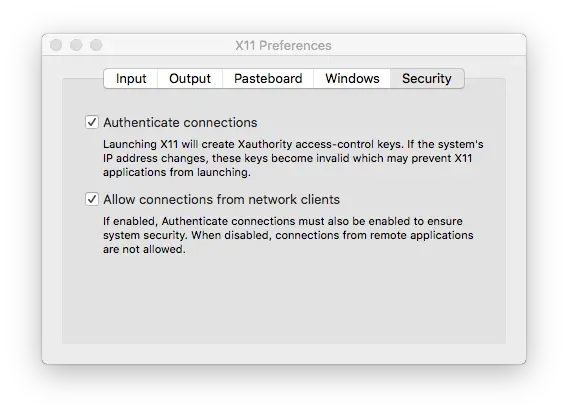

- Docker for mac find ip address apk#
- Docker for mac find ip address manual#
- Docker for mac find ip address portable#
- Docker for mac find ip address windows#
Why would this be so difficult? Because containers will, by design, isolate the application from the host environment.
Docker for mac find ip address portable#
Allowing the user to inject this gives you the most portable design. as an environment variable or config file. Instead you have the person running the container inject an external hostname/ip address as configuration, e.g.

The standard best practice for most apps looking to do this automatically is: you don't. $ ifconfig eth0 | grep -oP 'inet addr:\K\S+' (2/4) Installing ca-certificates (20160104-r2)Įxecuting igger
Docker for mac find ip address apk#
curl įor example: $ docker run alpine /bin/sh -c "apk update apk add curl curl -s echo" for the host is still available from inside the container. Make sure the IP you use doesn't conflict with something on your own network. That's why I used 192.168.* in the example above. In my case, this showed inet 127.0.0.1/8 which means I couldn't use any IPs in the 127.* range. So check the loopback interface inside the container if you have trouble: sudo ip addr show lo One thing to be careful about is that the docker container won't send traffic to the parent host if it thinks the traffic's destination is itself. When you are finish using this IP, you can remove the loopback alias like this: sudo ifconfig lo0 -alias 192.168.46.49 Now when traffic comes into your Mac addressed for 192.168.46.49 (and all the traffic leaving your container does go through your Mac) your Mac will assume that IP is itself. In my case I wanted to connect to a remote xdebug server: telnet 192.168.46.49 9000 You can then test the connection from within the docker container with telnet. This is of course a pain if this IP address ever changes, but you can add a custom loopback IP to your Mac that the container doesn't think is itself by doing something like this on the parent machine: sudo ifconfig lo0 alias 192.168.46.49 This should show you the IP of your Mac on its current network and your docker container should be able to connect to this address as well. For example if you run this from the parent machine run: ipconfig getifaddr en0 All outgoing traffic however, is routed through your parent host, so as long as you try to connect to an IP it recognizes as itself (and the docker container doesn't think is itself) you should be able to connect. On Docker for Mac the docker0 bridge does not exist, so other answers here may not work. For prior versions of Docker for Mac the following answer may still be useful: Update: On Docker for Mac, as of version 18.03, you can use as the host's IP. In my docker-compose.yml file, I have this: version: '3'Ĭommand: /usr/local/bin/gunicorn -c /usr/src/app/gunicorn_config.py -w 1 -b :8000 wsgi documentation, this is for development purposes only.įor example, I have environment variables set on my host: MONGO_SERVER= This is an update from the Mac-specific, available since version 17.06, and .internal, available since version 17.12, which may also still work on that platform. Works in Docker for Mac, Docker for Windows, and perhaps other platforms as well.
Docker for mac find ip address manual#
In most cases, you should use one of the recommended methods that don't require manual configuration.As of version 18.03, you can use as the host's IP. Use this method only for special cases and custom configurations. TCP socket: This method should work for any Docker version and operating system. If the Connection successful message doesn't appear, check your Docker Machine executable setting on the Docker | Tools page.
Docker for mac find ip address windows#
For details on how this impacts security in your system, see Docker Daemon Attack Surface.ĭocker Machine: If you are using Docker Toolbox for Windows or macOS, this is the recommended option for connecting to the Docker API. The docker group grants privileges equivalent to the root user.

If you get permission denied errors, add the current user to the docker group on the machine, log out, and then log back in. Unix socket: This is the recommended connection option for Linux. Select the method for connecting to the Docker API.ĭocker for Windows: The recommended option when using Docker Desktop for Windows.ĭocker for Mac: The recommended option when using Docker Desktop for Mac.


 0 kommentar(er)
0 kommentar(er)
